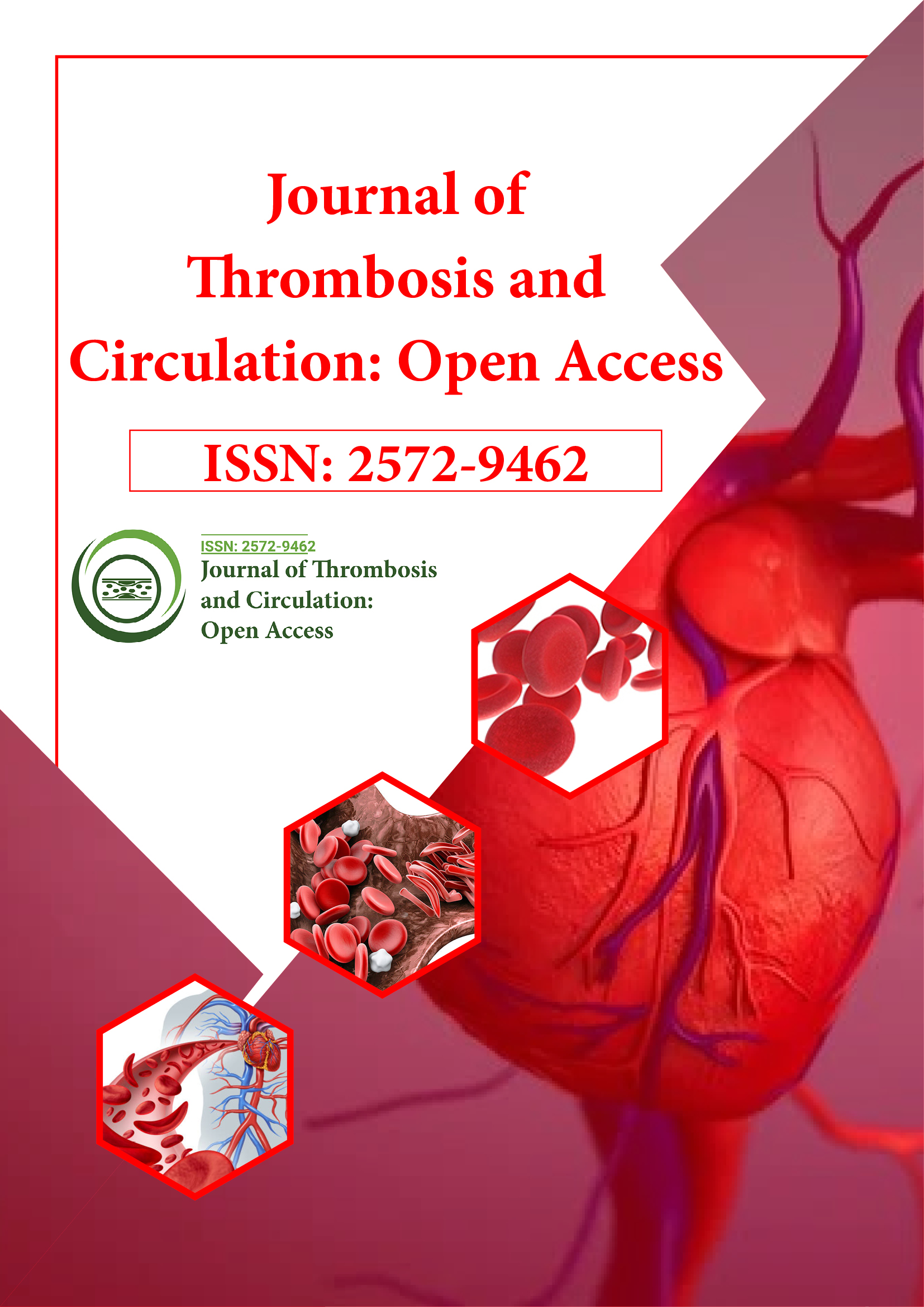Indexed In
- RefSeek
- Hamdard University
- EBSCO A-Z
- Publons
- Google Scholar
Useful Links
Share This Page
Journal Flyer

Open Access Journals
- Agri and Aquaculture
- Biochemistry
- Bioinformatics & Systems Biology
- Business & Management
- Chemistry
- Clinical Sciences
- Engineering
- Food & Nutrition
- General Science
- Genetics & Molecular Biology
- Immunology & Microbiology
- Medical Sciences
- Neuroscience & Psychology
- Nursing & Health Care
- Pharmaceutical Sciences
Opinion Article - (2024) Volume 10, Issue 3
Risk Stratification of Coronary Stent Thrombosis Based on ABO Blood Groups
Emily Davis*Received: 30-Aug-2024, Manuscript No. JTCOA-24-21419; Editor assigned: 02-Sep-2024, Pre QC No. JTCOA-24-21419 (PQ); Reviewed: 16-Sep-2024, QC No. JTCOA-24-21419; Revised: 23-Sep-2024, Manuscript No. JTCOA-24-21419 (R); Published: 30-Sep-2024, DOI: 10.35248/2572-9462.24.10.283
Description
The relationship between ABO blood group and susceptibility to various cardiovascular conditions has been a growing area of interest in medical research. Among these, the potential association between ABO blood group and the risk of coronary Stent Thrombosis (ST) is particularly intriguing. Coronary stent thrombosis, a rare but serious complication following Percutaneous Coronary Intervention (PCI), can result in acute myocardial infarction or even sudden cardiac death. Understanding the role of ABO blood group in influencing this risk could have important implications for personalized medicine and post-stent care.
Evidence from existing literature suggests that ABO blood group may modulate thrombotic risk through its influence on coagulation pathways, particularly via von Willebrand Factor (vWF) and factor VIII levels. Individuals with non-O blood groups (A, B and AB) generally have higher levels of vWF and factor VIII compared to those with blood group O. These elevated levels of vWF and factor VIII contribute to a prothrombotic state, potentially increasing the risk of both arterial and venous thrombosis. Such findings raise the possibility that non-O blood group individuals could be at a heightened risk of developing coronary stent thrombosis, particularly in the context of other risk factors like inadequate antiplatelet therapy or high platelet reactivity.
Clinical studies examining this relationship have yielded mixed results, with some suggesting an association between non-O blood groups and increased thrombotic events following PCI, while others have found no significant correlation. The discrepancies may be attributable to differences in study design, patient populations, or the duration of follow-up. For example, the interplay between ABO blood group and traditional risk factors for stent thrombosis, such as diabetes, smoking, or stent type, has not been consistently explored. Furthermore, the impact of antithrombotic therapy adherence in these studies cannot be overlooked, as robust antiplatelet regimens might mitigate the potential influence of ABO blood group on thrombotic risk.
From a clinical perspective, these findings highlight the importance of adopting a multifactorial approach when assessing the risk of coronary stent thrombosis. While ABO blood group may serve as a potential marker of thrombotic risk, it is unlikely to act in isolation. Instead, its impact should be considered alongside other clinical and procedural variables. For example, patients with non-O blood groups undergoing PCI could benefit from closer monitoring for signs of hypercoagulability or more aggressive antithrombotic strategies to reduce the likelihood of adverse events.
Despite its potential significance, the clinical utility of ABO blood group in guiding risk stratification and management strategies remains limited by the current lack of definitive evidence. Larger, multicenter studies with robust designs are needed to elucidate the precise role of ABO blood group in coronary stent thrombosis. Additionally, research into the underlying mechanisms of this association could shed light on new therapeutic targets, particularly for high-risk populations.
In conclusion, while the association of ABO blood group with coronary stent thrombosis remains an area of active investigation, current evidence suggests that individuals with non-O blood groups may be predisposed to a prothrombotic state, potentially increasing their risk of stent thrombosis. Incorporating ABO blood group into the broader context of thrombotic risk assessment could enhance patient care by informing personalized management strategies. However, further research is necessary to confirm these findings and translate them into clinical practice. As the understanding of this relationship evolves, it may create the path for more precise risk stratification and improved outcomes for patients undergoing PCI.
Citation: Davis E (2024). Risk Stratification of Coronary Stent Thrombosis Based on ABO Blood Groups. J Thrombo Cir. 10:283.
Copyright: © 2024 Davis E. This is an open-access article distributed under the terms of the Creative Commons Attribution License, which permits unrestricted use, distribution, and reproduction in any medium, provided the original author and source are credited.
